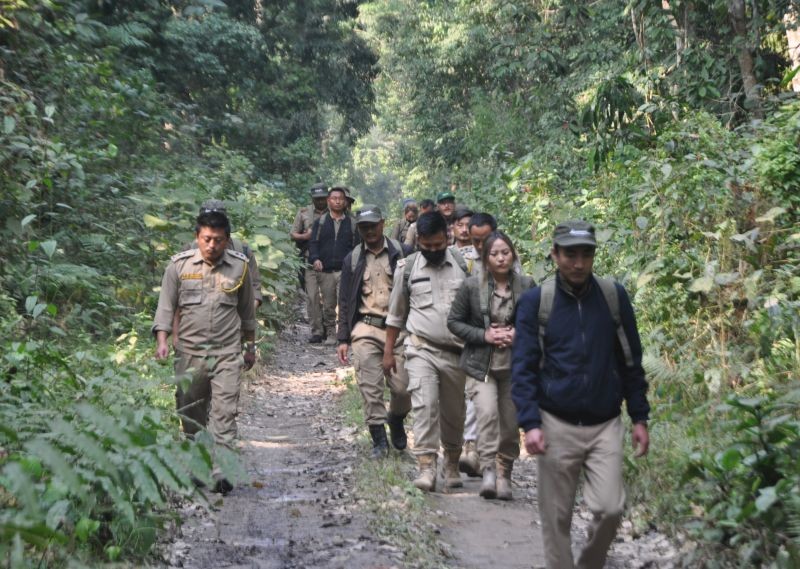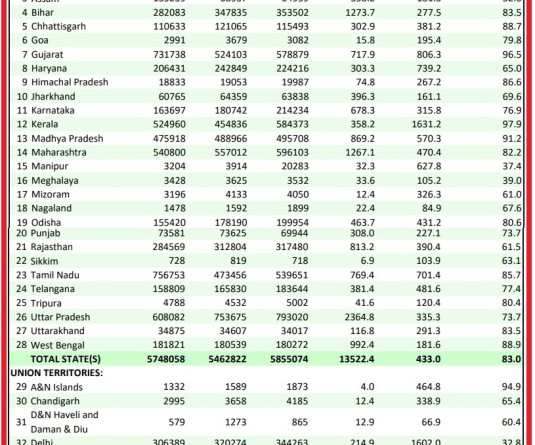A total of 28 forest guards from five wildlife division of Nagaland attended the training and were part of the field study at Hollongapar Gibbon Wildlife Sanctuary in Assam.

Dimapur, February 12 (MExN): The species of Hoolock Gibbons, the Western Hoolock Gibbon (Hoolock hoolock) and the Eastern Hoolock Gibbon (Hoolock leuconedyes) are distributed in NE India. Their distribution in India is limited to the seven states of NE India on the southern bank of the Dibang – Brahmaputra river system, according to an update from Aaranyak (A Scientific and Industrial Research Organisation).
“Unfortunately, habitat fragmentation and hunting are the major threats to gibbons in India. Added to this situation is the lack of basic information and poor conservation awareness about the species in different sections of the people including the frontline staff of the Nagaland Forest Department, which is yet another major hindrance in the conservation of the species,” it observed.
The forest guards who actually work in the field are unaware about the various facets of Hoolock Gibbon conservation strategy. “Keeping this fact in view and to generate conservation tempo in the States of Nagaland, we have designed these series of ‘training of forest guard for the conservation of Hoolock Gibbon in Nagaland,” the update stated.
Aaranyak, with a mission of carrying out research, training and conservation activities in NE India in collaboration with Nagaland Forest Department with support from US Fish & Wildlife Service carried out the weeklong and residential training from February 7 to 12.
A total of 28 forest guards from five wildlife division of Nagaland attended the training and also were part of the field study at Hollongapar Gibbon Wildlife Sanctuary in Assam.
During the training, a wide range of related topic areas were covered including: Biodiversity in NE India and conservation, primates conservation in ne India with special reference to Hoolock Gibbon, Gibbon census or population estimation, Gibbon data collection, maintaining and reporting, techniques of floristic study, gibbon habitat characteristic and restoration, population and habitat monitoring, gibbon rescue and rehabilitation, global positioning system and use in field, and legal orientation (wildlife laws and its application).
The course consists of daily lectures and field exercises and it provided participants with an initial understanding of the basic principles of Primatology, experience with the methods and techniques used in field research, it stated.
First batch of training was started on February 7 at State Environment and Forestry Training Institute (SEFTI), Dimapur. Addressing the trainees, M Shakiba Yimchunger, IFS, Director of SEFTI, Dimapur, said that this type of training is first of its kind in the state of Nagaland, which will help to build the capacity for the conservation of biodiversity.
Dr Dilip Chetry, Head, Primate Research & Conservation Initiatives, Aaranyak requested the particioants to make use of the training to enhance their knowledge of conservation of Hoolock Gibbon in particular and biodiversity in general. Obed B Swu, Deputy Director, SEFTI also addressed the programme.
During these training, Dr IC Baruah of Assam Agricultural University, Dr Bibhab Kumar Talukdar, Dr Bibhuti Prasad Lahkar, Dr Dipankar Lahkar, Dr Jimmy Borah, Dr Dilip Chetry, Arup Kr Das of Aaranyak, Mridy Paban Phukan from Wildlife Conservation and Study Centre, and Ajay Kr Das, of Aaranyak & Guwahati High Court were the trainers.
During the convocation, certificate, books, posters and other study material were hand over to the trainees by Raj Priy Singh IFS, Conservator of Forest (Research, Planning & Utilization).
It also informed that the next batch of training will be held at SEFTI, Dimapur from February 21 to 26.




